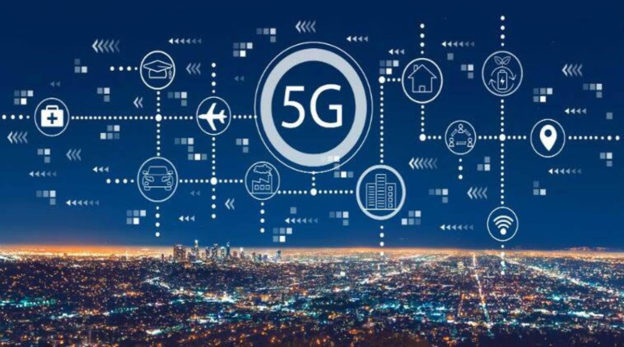Reduced costs, less downtime, little waste, and increased production are some of the ways 5G is expected to be used in the industrial sector.
India witnessed the rollout of state-of-the-art 5G services on October 1, 2022, 27 years after the country’s first internet service made its debut. The much-discussed 5G technology is expected to bring high-speed internet, better download rates, higher spectrum efficiency, and new opportunities for businesses and industries. When things are connected, everything undergoes a fundamental transformation that creates a new range of possibilities. The experience with 5G rollouts worldwide demonstrates that it will significantly boost socio-economic growth and industrial development.
The World of Industrial Automation in 5G
Industrial automation is the automatic operation and control of industrial processes without considerable human intervention and obtaining performance superior to manual control. It can be characterised as the application of predetermined technologies and automatic control devices. 5G-enabled smart factories will automate tedious, labour-intensive, and risky jobs. The workforce can have more time to focus on important activities as a result, which will secure remote monitoring, lower human errors, and the dangers of tragic accidents, among other things.
With 5G taking the lead, market applications will be able to grow more imaginative, and this will further encourage more enterprises to emerge across industries to transform our lives. It will make it possible to create the ‘factory of the future’, assist in providing high-quality healthcare and education in remote places, and accelerate the development of fully driverless vehicles.
By using cognitive insights, 5G can improve telematics in the automobile sector by safeguarding the journey, enhancing driver assistance systems, preventing driver exhaustion, enabling faster reflex responses, upgrading in-car entertainment, and promoting vehicle-to-vehicle communication. Faster connectivity enables vehicles to proactively use traffic infrastructure in situations with unpredictable traffic or when it is challenging to read signals. With a comprehensive combination of 5G, a vision that is solely camera-based, and algorithms that can quickly adapt to unprecedented traffic circumstances, we are moving closer to making autonomous cars a reality in India soon.
Hospitals will have 5G-enabled tracking of medical equipment and patient beds to automate tasks and speed up patient handovers. For critical care while being transported to the hospital, technology will enable doctors to connect to the patient in the ambulance virtually. Specially designed, cutting-edge 5G connected ambulance outfitted with medical equipment, patient monitoring applications, and telemetry devices that transmit the patient’s health data to the hospital in real-time will be functional in the Indian streets soon. It offers body cams for paramedic workers, camera-based headgear, and onboard cameras that are all connected to the 5G network.
Better connectivity would dramatically improve education at the basic and secondary levels in remote and rural locations since it will enable quick interactivity and connectivity with many devices. Students from various backgrounds and remote locations can take part in classes in real-time. Precision farming, intelligent irrigation, enhanced soil, and crop monitoring, and animal management are just a few examples of how agriculture may have the full value chain. Smart grids and smart metering can be encouraged in the energy sector. Low-latency communications will be essential for managing these grids as renewable and storage technologies advance.
Reduced costs, less downtime, little waste, and increased production are some of the other ways 5G is expected to be used in the industrial sector. The logistics cost is anticipated to decrease from 13–14% to 5% with the advent of 5G technology.
What the Future Holds
With peak data transfer rates of up to 20 Gigabits per second and more than 100 megabytes per second average data rates, 5G is reportedly about ten times faster than its predecessor. The 5G network will not only disrupt over-the-top (OTT) browsing but will also bring a digital transformation and network virtualisation across sectors. It will offer 100 times the speed and 1,000 times the capacity of current mobile networks, and lesser energy usage under a single network to provide a variety of heterogeneous services like AI, extended reality (XR), edge computing, and the Internet of Things (IoT).
Real-time data transfer and simple over-the-air software and application updates will be possible in homes with cloud connectivity across all smart devices, and appliances. By enabling IoT-enabled products like air conditioners, washing machines, refrigerators, and smart fans to communicate and transfer data in real time at a faster rate, high-speed connectivity will improve the consumer experience. Smart buildings powered by 5G can assist create a more comfortable working environment for employees and staff, increasing productivity and cutting expenses for companies.
With ground-breaking applications at our fingertips, there has never been a better time for forward-thinking companies to make a difference in the world. Our goal of Aatmanirbhar Bharat is getting closer to reality, and there is no doubt that the next wave of digital disruption will be driven by 5G’s technological superiority.
https://www.financialexpress.com/industry/the-next-phase-of-growth-for-india-inc-can-be-unlocked-by-5g/2925280/





